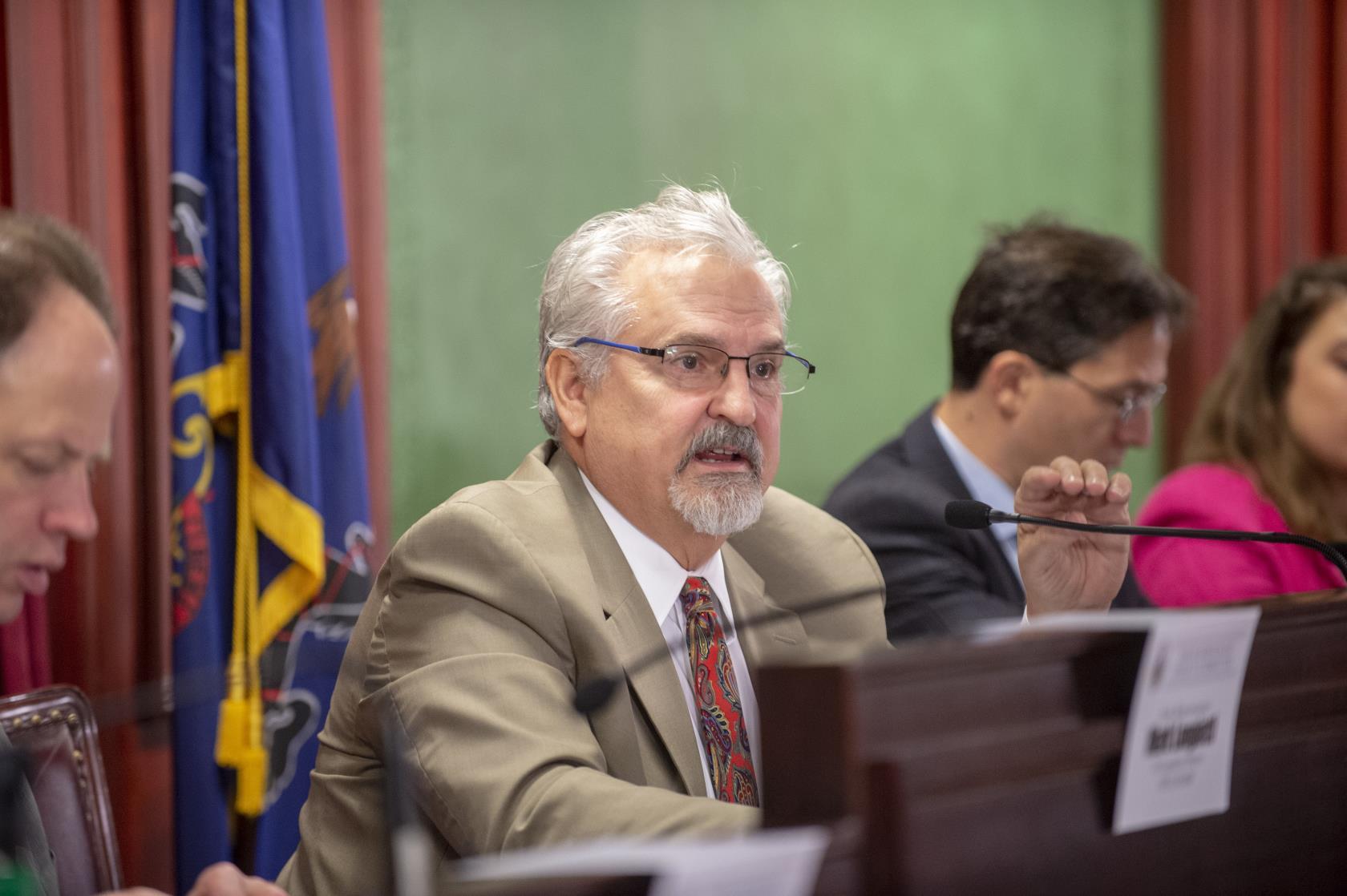
Originally published in the Winter 2024 edition of Context, the journal of the American Institute of Architects, Philadelphia Chapter
Representative P. Michael Sturla represents District 96, serving part of Lancaster City and its northern suburbs. He is the Majority Chair of the Housing and Community Development Committee.
EDUCATION AND PRE-POLITICAL CAREER
Where did you go to architecture school, and how was your pre-political career affected by your architectural education?
- University of Kansas—Bachelor’s degree, Environmental Design ’79.
- Following graduation, founded a construction company so I could self-teach construction techniques 1979-89.
- Founded Aarchitrave—Design Firm with 4 partners (1 licensed).
Based on your experience, how would you change architectural education?
- Require 1 year of 3-year apprenticeship by doing actual construction.
- Require additional emphasis on training regarding context, scale, proportion … the abstract aspects of good architecture that sometimes get lost when a project is viewed in isolation.
PUBLIC SERVICE AND RUNNING FOR OFFICE
When and why did you decide to enter public service?
1987—Parking issue in my neighborhood got me involved in city council (stopped construction of 1 parking garage, implemented changed to second garage that preserved sunlight for adjacent row homes.)
What skills served you best in running for office?
I was taught that architecture was/is a process by which you solve problems. Most often, that solution involves construction (alteration of the built environment, but not always … and if it only involves the construction of a structure, it is, most often, not architectural at all but rather building “manufacturing.”
How has your architectural training and/or practice influenced your political career and how has design thinking provided you with a different perspective in your political discussion?
I once had a colleague tell me, “Most legislators use the front door because it conforms to convention. Some of our “think outside the box” colleagues use the back door because they found a different entrance. Sturla, you tend to knock a hole through the sidewall to enter.” The point is that conventions were/are seldom a barrier to me … something I credit almost exclusively to my architectural education.
POLICY AND DESIGN
How do you think Pennsylvania might advance the quality of the built environment through legislation and regulations?
- Move planning and zoning to county vs. local municipal level.
- Adopt a historic renovation construction code.
- Require all projects/subsidies/grants to incorporate best environmental practices.
What initiatives have you proposed that are related to architecture and the built environment?
- Linear parks encouraging streams/riparian buffers to control water pollution and provide parks.
- Overlay zoning/incentives to convert footprints of vacant big box stores in malls to housing.
- Congestion pricing to incentivize non-peak hours of highway use and forego costly additional lanes.
- Mandatory residential zoning for workforce housing near industrial parks/high employment centers.
- 100-year plan to bury utilities in dense urban areas.
- 100-year plan to rebuild all public-school buildings and renovate them twice.
Does your architectural background come into the forefront when proposing/adoption legislation relating to sustainability & housing?
Yes. Housing near jobs vs. exclusionary zoning.
Do your peers understand the nature of your training and what architects do?
No, not a clue. My guess is, if asked, most would say that architects are the cause of high construction costs, and that is about all.
How have you been able to convey built environment issues to your political counterparts who might be unfamiliar with intricacies in architecture?
On occasion, when there was a push to “standardize” all public school design by commissioning a half dozen school plans and then letting the district pick one of six designs, I dug out my copy of a obscure book, “The Ideal Communist School,” which proudly displayed a brutalist concrete box, and shared some concern among them, but it is a chore.
ADVOCACY
How can architects make a meaningful political impact?
I would recommend more interaction from private sector architects with elected officials. Unless you can elect a critical mass of elected architect/public servants, most architects might be frustrated by the torturously slow pace of positive change in public service. But an onslaught of architects from the private sector for a sustained period of time (years), would more likely result in more rapid results.
Apart from design, what do you think the profession of architecture can do to contribute to the public sphere?
Architects are trained to gather massive amounts of information and assemble and digest that information in a way that their often-untrained clients can understand and propose solutions. A very useful tool in the public sphere.
What actions or strategies can “citizen architects” do to make a meaningful impact?
Do some pro-bono work for communities that lack the funds to hire architects, understanding cultural sensitivities in the process.
